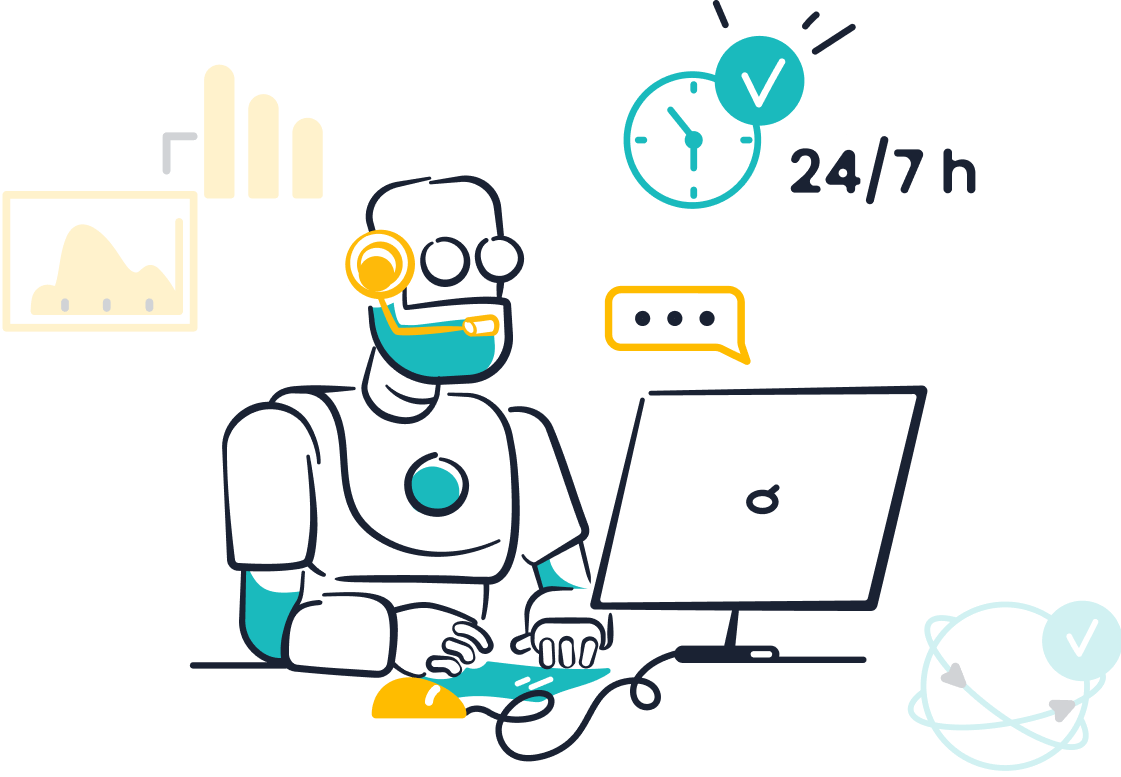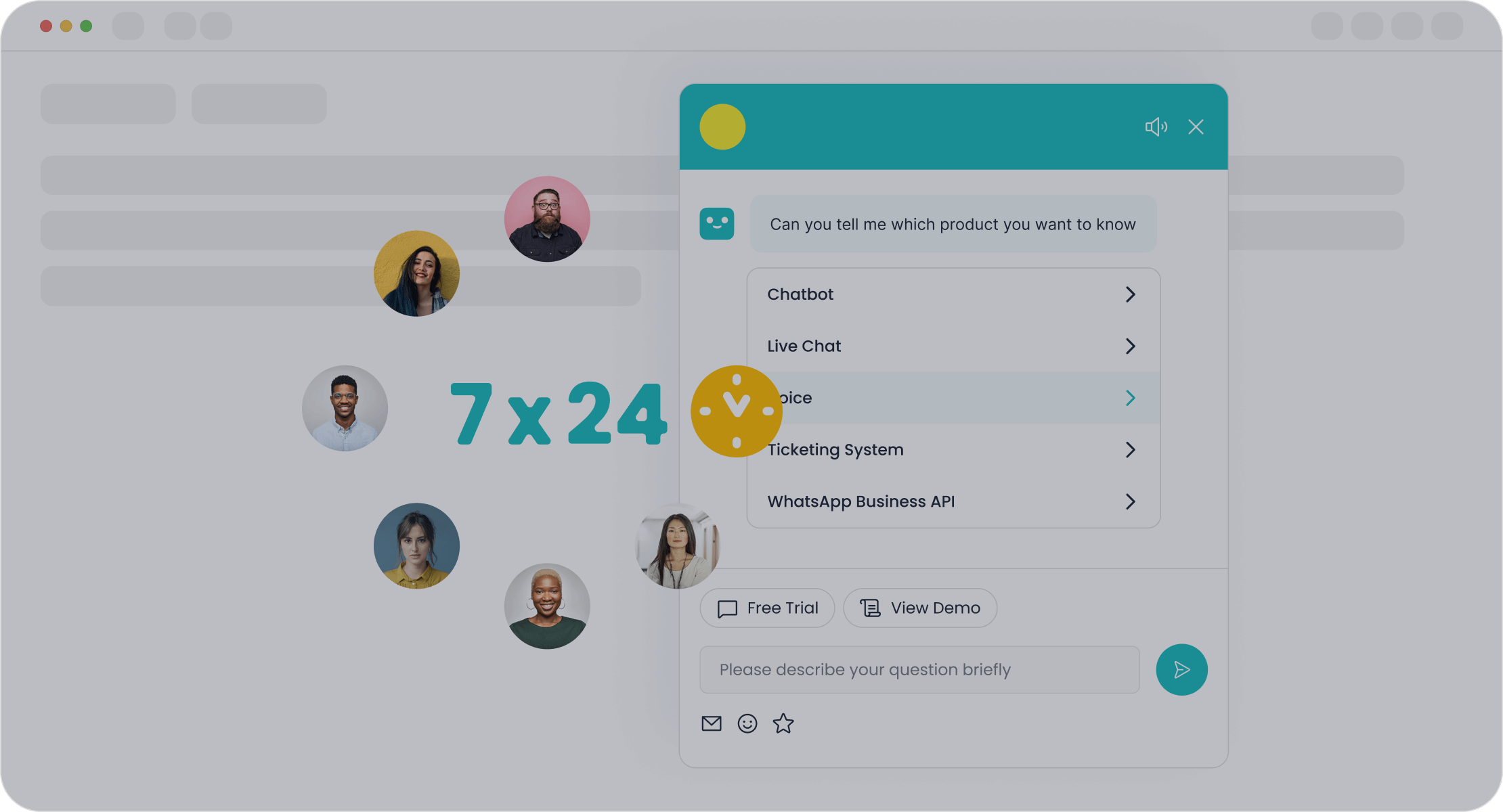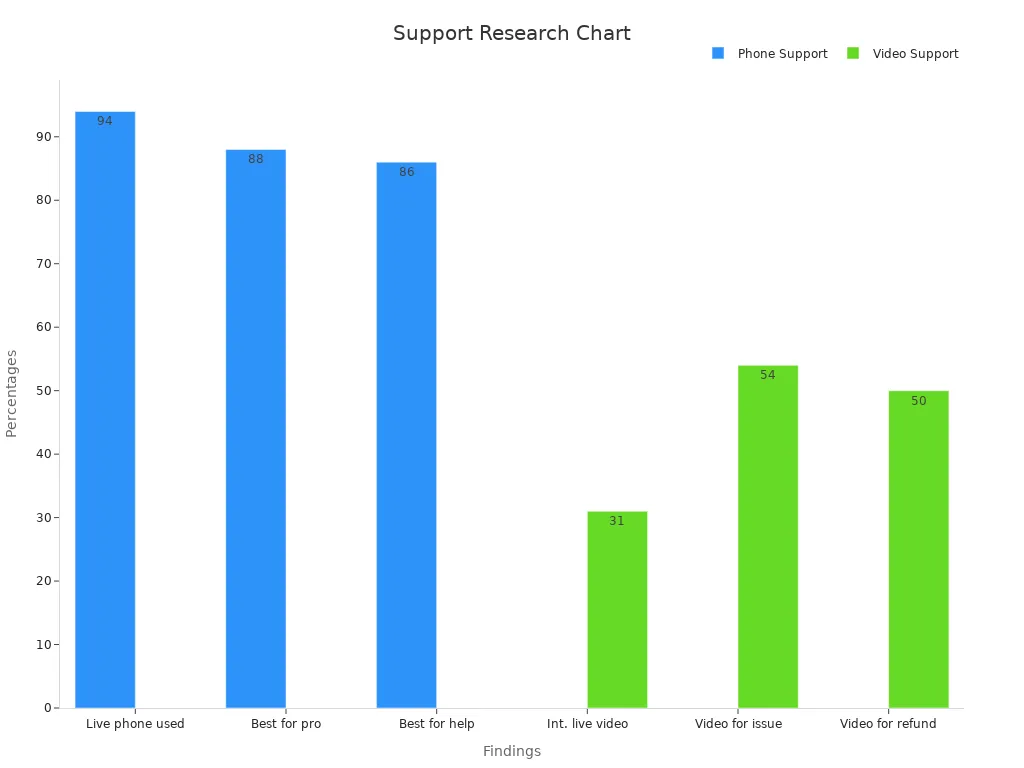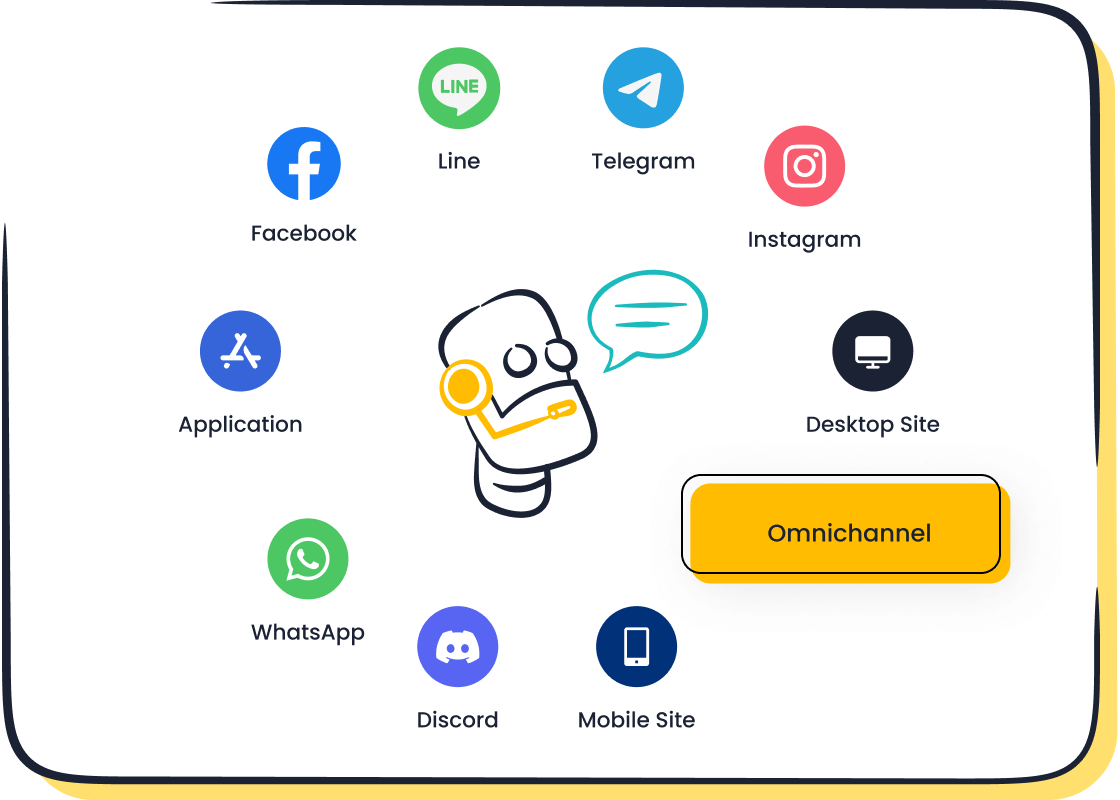2025 Insights on Different Customer Service Types Pros and Cons

Customer service has become a pivotal factor in 2025. Why? Because customers now expect faster, smarter, and more personalized interactions. Did you know that 73% of customers say their buying decisions depend on the experience they receive? That’s significant! Moreover, over half of them are willing to switch brands after just one poor experience. This makes understanding the different types of customer service crucial for driving business success.
Technology has revolutionized how businesses interact with customers. From AI-powered chatbots like Sobot to advanced omnichannel solutions, companies now have the tools to meet growing customer expectations. Customers demand immediate service, with 72% expecting instant responses. When you address their issues quickly, they’re 2.4 times more likely to remain loyal to your brand. The result? Enhanced customer engagement and long-term loyalty.
In today’s competitive landscape, mastering different types of customer service isn’t just an option—it’s the key to staying ahead and thriving.
Live Chat: Real-Time Customer Support

Benefits of Live Chat for Instant Communication
Live chat has become a favorite among customers looking for quick and efficient help. Did you know that 53% of customers prefer live chat over other digital methods? It’s easy to see why. Live chat offers instant communication, allowing you to resolve issues in real time without the delays of email or phone queues. For example, companies like Vend saw a 48% boost in agent productivity after adopting live chat, cutting response times from hours to just 10 minutes. That’s a game-changer for customer satisfaction.
Live chat also improves the overall customer experience. With an average waiting time of just 36 seconds and a chat duration of around 11 minutes, it’s clear that this method keeps customers engaged and happy. Plus, businesses using live chat often see a significant rise in customer loyalty, as faster responses lead to better relationships.
Challenges of Live Chat in Customer Service
While live chat is incredibly effective, it’s not without its challenges. One common issue is response time. On average, it takes companies 2 minutes and 40 seconds to acknowledge a live chat message. This delay can frustrate customers who expect immediate attention. Another challenge is the lack of follow-up communication. Only 55% of companies send chat transcripts after a session, leaving customers without a record of their interaction. Additionally, 45% of businesses fail to ask for feedback, missing out on valuable insights to improve their service.
These challenges highlight the importance of using a robust live chat system that prioritizes speed, follow-ups, and feedback collection to enhance the customer experience.
How Sobot's Live Chat Enhances Customer Interactions
Sobot’s Live Chat takes real-time customer support to the next level. With a customer satisfaction rate of 97%, it’s clear that Sobot understands what customers need. The platform boosts agent efficiency by 30%, allowing your team to handle more inquiries without compromising quality. Sobot’s unified inbox consolidates messages from multiple channels, ensuring seamless communication. It also supports over 300 performance indicators, giving you the tools to monitor and improve your service.
What sets Sobot apart is its AI-enhanced workspace. This feature helps agents respond faster and more accurately, reducing wait times and improving customer satisfaction. Whether you’re in retail, gaming, or financial services, Sobot’s Live Chat adapts to your industry’s unique needs. By integrating advanced technology with a customer-centric approach, Sobot ensures that your live chat customer support delivers exceptional results.
Email Support: Reliable and Documented Communication
Email support remains a cornerstone of customer service, offering reliability and a clear record of communication. It’s a method that businesses and customers alike trust for its professionalism and traceability. Let’s explore why email customer support continues to be a vital part of different types of customer service.
Advantages of Email Support for Businesses
Email support provides a structured and documented way to communicate with your customers. Every interaction is recorded, ensuring transparency and accountability. Here’s a quick breakdown of what makes email support so reliable:
| Evidence Component | Description |
|---|---|
| Day and time of delivery and receipt | Certifies when the email was sent and received. |
| Send and delivery IP addresses | Provides the IP addresses involved in the email transaction. |
| Sender and recipient email addresses | Identifies the parties involved in the communication. |
| Content of the email | Ensures the actual message is preserved as part of the evidence. |
| Mail attachments | Includes any files sent along with the email. |
| Timestamp | Confirms the exact time the email was sent and received. |
This level of documentation makes email support invaluable for industries like finance or legal services, where accuracy and records are critical. Additionally, email support allows businesses to personalize their responses. For example, Johnny Cupcake increased revenue by 141% through targeted email campaigns. That’s the power of understanding your customers and tailoring your communication.
Email also works well for B2B interactions. Did you know B2B marketing emails have a 23% higher click-to-open ratio than B2C emails? This shows how effective email can be in building professional relationships and driving customer satisfaction.
Drawbacks of Email Support in Modern Customer Service
Despite its strengths, email support has its challenges. One major drawback is response time. Customers often expect instant replies, but email support can take hours—or even days—to respond. This delay can lead to frustration, especially when customers need urgent help.
High email volumes can also overwhelm your support team. Without automation, managing these inquiries becomes a daunting task. Misunderstandings are another issue. Unlike live chat or phone support, email lacks the immediacy of voice communication, which can make it harder to clarify complex issues. Clear and concise responses are essential to avoid confusion.
To overcome these challenges, tools like Sobot’s ticketing system can help. By automating workflows and managing service-level agreements (SLAs), Sobot ensures your email support remains efficient and effective. This way, you can handle high volumes while maintaining customer satisfaction.
Phone Support: Personalized and Direct Assistance
Strengths of Phone Support in Building Customer Relationships
Phone support remains one of the most trusted customer service channels. Why? Because it offers a personal touch that other types of customer support often lack. When customers hear a real voice on the other end, it builds trust and makes them feel valued. This direct interaction allows you to address concerns immediately, creating a stronger bond with your customers.
Metrics like Customer Satisfaction Score (CSAT), Customer Effort Score (CES), and First Contact Resolution (FCR) highlight the effectiveness of phone support in building relationships:
| Metric | Description |
|---|---|
| Customer Satisfaction Score (CSAT) | Indicates how satisfied customers are with the service they received. A high score reflects effective support. |
| Customer Effort Score (CES) | Measures how easy it is for customers to get their issues resolved. Lower effort correlates with better relationships. |
| First Contact Resolution (FCR) | Shows the percentage of issues resolved on the first contact. Higher rates suggest efficient service and stronger customer trust. |
For example, a high FCR rate means your team resolves issues quickly, leaving customers with a positive impression. This is where Sobot’s Voice Call Center shines. It offers features like rule-based routing and smart inbound calls, ensuring your customers connect with the right agent immediately. This efficiency not only improves customer satisfaction but also strengthens loyalty.
Limitations of Phone Support in High-Volume Scenarios
While phone support excels in personalization, it faces challenges in high-volume situations. Long wait times and overwhelmed agents can frustrate customers. Research shows that 94% of people used live phone support last year, and 88% consider it the most professional option. However, as demand increases, maintaining quality becomes tough.

The chart above highlights the growing interest in live video support as an alternative. While phone support remains dominant, businesses must adapt to evolving customer preferences. Sobot’s omnichannel customer support solution can help. By integrating phone support with other customer service channels, like live chat and email, you can manage high volumes more effectively. This approach ensures no customer feels neglected, even during peak times.
Phone customer support is a cornerstone of different types of customer service. By combining its strengths with modern tools like Sobot’s solutions, you can deliver exceptional service while overcoming its limitations.
Self-Service Options: Empowering Customers with Automation

Benefits of Self-Service in Reducing Costs
Self-service options are transforming how businesses handle customer support. By empowering customers to find answers on their own, you can save time and money while improving satisfaction. Imagine this: instead of waiting on hold, your customers can quickly resolve their issues through a knowledge base or chatbot. It’s a win-win!
The financial benefits are undeniable. Research shows that self-service can save businesses between $1-3 million annually. Automated interactions cost as little as $0.25 each, compared to $6-12 for live agent calls. That’s a massive reduction in support costs—up to 75%! Plus, self-service technology can cut labor costs by 30%, freeing up resources for other priorities. These savings make self-help customer support an essential part of modern customer service options.
Drawbacks of Self-Service for Complex Issues
While self-service is great for simple tasks, it’s not perfect. Some challenges can frustrate your customers if not addressed. For instance, outdated content can make it hard for customers to find accurate answers. Poorly designed interfaces can also leave them feeling lost. And let’s face it—some problems are just too complex for automation. When customers hit a “self-service wall,” they need human interaction to resolve their issues.
To avoid these pitfalls, you should regularly update your self-service tools and ensure they’re easy to navigate. Combining self-help customer support with live agents can provide the best of both worlds, giving your customers the flexibility they need.

Sobot Chatbot: Revolutionizing Self-Service with AI
Sobot’s AI-powered chatbot is a game-changer in self-help customer support. It’s designed to handle repetitive tasks efficiently, saving you time and money. Businesses using Sobot’s chatbot report up to a 30% reduction in customer support costs. That’s money you can reinvest in growth or pass on to your customers through better pricing.
What makes Sobot’s chatbot stand out? It’s easy to deploy—no technical team required. Sobot’s experts train the chatbot for you, ensuring it’s ready to tackle customer queries. The chatbot uses advanced natural language processing (NLP) and large language models (LLMs) to learn and improve over time. This means it gets better at answering questions, even the tricky ones.
With Sobot, you’re not just automating customer service. You’re creating a seamless experience that keeps your customers happy and engaged. Whether you’re in retail, gaming, or financial services, Sobot’s chatbot adapts to your needs, making it a must-have for different types of customer service.
Social Media Support: Engaging Customers Publicly
Advantages of Social Media for Quick and Public Responses
Social media has become a powerful tool for engaging with your customers. It allows you to connect with them quickly and publicly, making it one of the most effective customer support types. Over two-thirds of consumers now use social media to discover new products and services. This means your presence on platforms like Facebook, Instagram, and Twitter isn’t just optional—it’s essential.
One of the biggest advantages of social media customer support is speed. You can respond to customer inquiries in real time, addressing their concerns before they escalate. For example, social media analytics help you track engagement metrics, showing which channels and content drive the most interaction. This data allows you to set realistic goals and refine your strategies. Plus, 45% of consumers follow brands for entertaining content, so keeping your responses engaging can boost loyalty.
Here’s a quick look at why social media works so well for customer service:
| Benefit | Description |
|---|---|
| Fast and Reliable Insights | Social media provides quick access to consumer interests and preferences, enabling timely responses. |
| Real-time Feedback | Companies can gather immediate feedback from users, allowing for swift adjustments to strategies. |
| Understanding Consumer Behavior | Analyzing social media interactions helps identify trends and sentiments, guiding marketing efforts. |
By using social media effectively, you can turn casual followers into loyal customers. Tools like Sobot’s omnichannel solution make this even easier by integrating social media with other customer support channels, ensuring seamless communication.
Risks of Social Media in Customer Service
While social media offers many benefits, it also comes with risks. One major challenge is the public nature of these platforms. A single negative comment can quickly spiral into a full-blown crisis. For instance, a global cosmetics brand faced backlash due to false claims about animal testing. The misinformation spread rapidly, causing a drop in stock prices and strained relationships with retail partners. Although the company managed to recover by removing 90% of the false claims and improving customer sentiment, the incident highlights the importance of real-time monitoring and transparent communication.
Another risk is the potential for misunderstandings. Social media posts are often short, which can lead to misinterpretation. Customers might feel their concerns aren’t fully addressed, leading to dissatisfaction. Additionally, managing multiple platforms can overwhelm your team, especially during peak times.
To mitigate these risks, you need a robust strategy. Sobot’s omnichannel solution can help by consolidating all your social media interactions into one platform. This ensures your team stays organized and responsive, even during high-volume periods. With the right tools and approach, you can turn social media challenges into opportunities to strengthen your customer relationships.
How to Choose the Right Customer Service Type
Evaluating Business Needs and Goals
Choosing the right customer service type starts with understanding your business needs. Ask yourself: What are your goals? Are you looking to improve customer satisfaction, reduce costs, or handle high volumes of inquiries? Each customer support type offers unique benefits, so aligning your goals with the right approach is crucial.
To evaluate effectively, consider these steps:
- Observe customer journeys. Step into your customers' shoes to identify pain points.
- Ask open-ended questions. For example, “What did you like best about your experience?” This can reveal valuable insights.
- Engage in the process. Participate in the same steps your customers take to develop empathy and understand their challenges.
Tracking key performance indicators (KPIs) like customer satisfaction and service efficiency can also guide your decision. For instance, if your goal is to improve first-contact resolution, phone support might be ideal. On the other hand, if cost reduction is a priority, self-service options like Sobot’s AI Chatbot can save up to 50% on agent costs.
Understanding Customer Preferences and Behaviors
Your customers’ preferences should play a big role in your decision. Do they prefer instant responses or detailed, documented communication? Understanding their behavior helps you tailor your service.
Here’s how data can help:
| Statistical Method | Description |
|---|---|
| Regression Analysis | Identifies how factors like price or marketing affect purchasing frequency. |
| Time Series Analysis | Tracks seasonal trends in customer behavior. |
| Clustering Algorithms | Groups customers by shopping patterns, helping you personalize interactions. |
For example, if your customers value speed, live chat or social media support might be the best fit. If they prefer detailed records, email support could be more effective. Tools like Sobot’s Omnichannel Solution can analyze these behaviors, ensuring you meet their expectations across all channels.
Leveraging Sobot's Omnichannel Solution for Seamless Service
Sobot’s Omnichannel Solution simplifies the process of managing multiple customer support types. It integrates all communication channels—like email, phone, and social media—into one unified workspace. This ensures your team can deliver consistent service, no matter how your customers reach out.
The results speak for themselves:
| Metric | Improvement |
|---|---|
| Customer service efficiency | Significant improvements |
| Decrease in waiting times | 35% |
| Enhanced customer interactions | 60% of clients |
By using Sobot’s solution, you can reduce wait times, improve customer satisfaction, and handle high volumes with ease. Whether your customers prefer live chat, email, or phone support, Sobot ensures a seamless experience that keeps them coming back.
Future Trends in Customer Service for 2025
The Role of AI and Automation in Customer Support
AI and automation are reshaping how you interact with customers. In 2025, these technologies will do more than just speed up processes—they’ll redefine customer support types entirely. AI tools like chatbots can handle routine queries instantly, reducing the workload on your team. For example, IBM Watson Assistant manages around 8,000 calls monthly, showcasing how AI can handle high volumes effectively. Plus, automated systems can cut resolution times by 30%, ensuring your customers get the help they need faster.
But it’s not just about speed. AI is becoming smarter, with tools that understand emotions and sentiment. This means you can maintain a human touch even when using automation. Imagine a chatbot that not only answers questions but also senses frustration and escalates the issue to a live agent. That’s the future of customer service. Sobot’s AI Chatbot already leads the way here, offering 24/7 multilingual support and reducing agent workloads by up to 70%. It’s a perfect example of how AI can enhance efficiency while keeping your customers happy.
Omnichannel Integration for Unified Customer Experiences
Your customers expect seamless interactions across all platforms. Omnichannel customer service ensures they get just that. Whether they reach out via email, social media, or live chat, they’ll experience consistent support. This unified approach is vital for building trust and loyalty. In fact, businesses that adopt omnichannel strategies see 91% higher customer retention rates.
Sobot’s Omnichannel Solution makes this integration effortless. It consolidates customer data from various channels, giving your team a complete view of each interaction. This means no more repeating information or switching between platforms. Real-time analytics also help you track performance and improve service quality. By adopting omnichannel customer service, you can deliver a unified experience that keeps your customers coming back.
Personalization and Predictive Analytics in Customer Service
Personalization is no longer optional—it’s expected. Predictive analytics takes this to the next level by anticipating your customers’ needs before they even ask. AI tools analyze past interactions to predict future behavior, helping you offer tailored solutions. For instance, predictive analytics can identify at-risk customers and suggest proactive retention strategies, reducing churn rates.
Sobot’s solutions excel in this area. Its AI-driven tools streamline operations, improve response times, and enhance customer retention. Imagine knowing exactly when a customer might need help or what product they’re likely to buy next. That’s the power of predictive analytics. By leveraging these insights, you can create personalized experiences that strengthen relationships and boost loyalty.
Understanding the pros and cons of different customer service types is essential for creating a strategy that works for your business. Each type has unique strengths. For example, phone support builds trust through personal interaction, while live chat offers quick resolutions. However, challenges like long hold times or difficulty gauging emotions in text-based communication can arise. A balanced approach ensures you meet customer expectations effectively.
Aligning your customer service strategies with your business goals is key. If you aim to reduce costs, self-service options like Sobot’s AI Chatbot can save up to 50% on agent expenses. For seamless communication, Sobot’s Omnichannel Solution integrates all channels into one platform, improving efficiency and customer satisfaction. By adopting innovative tools, you can stay competitive and deliver exceptional service in 2025.
FAQ
What is the best customer service type for small businesses?
Small businesses often benefit from self-service options like Sobot’s AI Chatbot. It reduces costs by up to 50% and handles repetitive queries 24/7. For more personalized support, live chat is another great choice. It’s cost-effective and keeps customers happy with instant responses.
How can I improve my email support efficiency?
You can use tools like Sobot’s ticketing system. It automates workflows, manages SLAs, and organizes emails efficiently. This reduces response times and ensures no inquiry gets overlooked. Businesses using automation see a 30% boost in productivity, making it a smart investment.
Why is omnichannel customer service important?
Omnichannel service ensures seamless communication across platforms like email, phone, and social media. Customers expect consistency, and businesses using omnichannel strategies see 91% higher retention rates. Sobot’s Omnichannel Solution integrates all channels into one workspace, improving efficiency and customer satisfaction.
Can AI replace human agents in customer service?
AI can handle repetitive tasks and simple queries, saving time and money. However, complex issues still require human empathy and expertise. Sobot’s AI Chatbot works alongside agents, boosting productivity by 70% while ensuring customers get the best of both worlds.
How do I choose the right customer service type for my business?
Start by analyzing your goals and customer preferences. If speed is key, live chat or social media support works well. For cost savings, self-service options like Sobot’s Chatbot are ideal. Tools like Sobot’s Omnichannel Solution help you manage multiple types seamlessly.
See Also
Best Reviews of Cloud Contact Center Services for 2024
Leading Contact Center Solutions Evaluated for This Year
2024's Ten Most Effective Customer Service Software Options